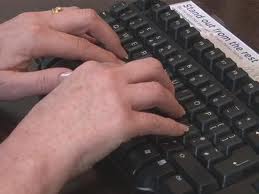Holy cow, yet another call today, a man hoping to start his 3 year old grandson on violin.
Okay, okay. I agree there are advantages to starting early. But…
Few people though consider the far greater risks of starting music lessons too early.
It takes five years for the average child to learn to cut in a straight line using scissors. Is playing the violin any simpler a task? And that’s not considering the focus, patience and intellectual skills required to play a musical instrument.
Drop the average three year old into a few months of lessons and you’ll often have one frustrated family. Progress will be difficult to discern. This sets up a negative mindset around the project, one which may be impossible to surmount later in life. Had the same student started at five years of age, he would likely catch up to the 3 year old within 6 months. And everyone, student included, will be much happier.
Sure, you can find a few outliers on YouTube. Like the 3 year old prodigy playing Vivaldi. But what you’re not seeing is behind the scenes: a razor focussed family support network built around that child. A practice regimen that doesn’t waver. And an inordinate amount of time on the project (to the exclusion of other activities) and a child that is far, far ahead of the bell curve.
Even if you are one of those outliers, you still must ask yourself: is this in the best interest of the child? Will the world be a better place and will your child be happier for this experience?
Remember that Violin is a long term project. It will still be around when your child is four or five. And she’ll likely devote the better part of a decade to achieve any level of mastery.
So what’s the rush?
Still, there’s much you can provide for your child before he is ready for structured lessons. Here are just a few ideas:
• Singing informally or in a group
• Classes that emphasize rhythm, movement and motor development
• Attending concerts in a variety of styles and venues
• Structured listening at home (Suzuki CDs are available to everyone)
All of this can start as early as in the womb! Your child’s love and devotion for music starts by modeling your own. There’s nothing wrong with starting actual lessons at five to seven years of age and beyond.
In a nutshell, give your young violinist a better than average chance for success. Provide the needed family support. Be an active participant in the learning process. Model your own love for music. Do all of this, and you can’t help but succeed in creating an Invincible Violinist in your own home.
If you find this information helpful, please share or tweet this page or post, using the buttons below. Thanks!

